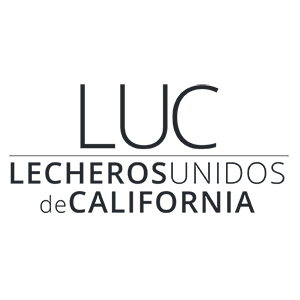By Paul Sousa, Director of Regulatory and Environmental Affairs
On Cinco de Mayo CDFA held a quota double header. The first was a hearing on Stop QIP’s Petition #5 and the second was a meeting of the Producer Review Board (PRB).
The hearing started with an overview of the rules for the hearing, introduction of the hearing panel, and reading exhibits into the record. The first to testify were proponents of the petition, of which there were two. Then the opportunity was given for any interested party to give testimony on the petition, followed by rebuttals from the petitioners. The arguments were the same that had been given recently on both sides. In total fewer than ten people gave testimony or asked questions. At the close of the meeting CDFA announced that the hearing transcript should be available within 30 days. The petition was also discussed at the PRB meeting that afternoon, which is discussed below.
Within less than an hour since the close of the hearing, the PRB was called to order at 1 o’clock in the afternoon. Below are the highlights of that meeting. The roll call included the introduction of new members to the PRB who had just been added to the board. Next, the Chair and Vice Chair were elected. William Dyt was elected as chair and Tony Nunes III as Vice Chair. Though new members had just been added to the board, two vacancies were created by a member selling out and another resigning after the appointment of new members, so CDFA asked the PRB for nominations for the two vacant positions. Ten names were put forth by the PRB for final selection by the Secretary.
CDFA legal staff provided an update on legal matters concerning the QIP. The case against CDFA, alleging the illegal taking of property by the QIP, was recently dismissed. CDFA announced that “a couple of quota holders and a banker” approached CDFA requesting information about the mechanics for the State of California to issue a bond for the purpose of retiring quota. CDFA did not want to respond to this group without first making the PRB aware of the request for information, so CDFA’s response was first provided to the PRB and would then be provided to the requestors. CDFA’s response of the general steps required to issue a state bond were:
- Hiring an attorney that specializes in government bonds
- Hiring a “municipal advisor” to work on the financial details associated with the proposal and, if applicable, its execution
- Amendments to the QIP Plan would be required
CDFA noted that since the issuance of a bond would involve the State of California putting its credit rating on the line, pursuing this concept would require approval by multiple agencies and levels of state government. Finally, CDFA stated that any request to formally explore this concept should be directed to the PR,B as it is charged with assisting the Department with the administration of Quota.
The Board then discussed the amount that should be targeted for reserves in the QIP account. Production, and specifically the impacts of bird flu, have had an impact on the reserve levels, and CDFA has been looking for some time for the PRB to provide staff with a policy on what the minimum reserve level should be. One outcome of this is that CDFA staff could possibly set the assessment amount within the guidelines of the PRB policy with oversight from the PRB. This was not decided at this meeting but could be part of the policy. This would mean that the assessment could be fine-tuned between PRB meetings to keep the reserve from getting outside of an acceptable range. A motion was made and unanimously approved by the board to direct CDFA to draft a policy for discussion at the next PRB meeting.
Next up was a discussion on the referendum procedure for the upcoming Stop QIP Petition #5 referendum.The rules for this referendum will be the same as for the referendum that just concluded. As a reminder, Stop QIP’s Petition #5 seeks the immediate termination of quota. CDFA expects to have production data for the referendum by mid-May and for the ballots to hit mailboxes during the first 2 weeks of June. At this point, a lengthy discussion was had on how ballots are handled and counted. Currently, CDFA does not open the ballot envelopes until after the election is complete. The question was asked about how many ballots were kicked out in the last referendum, and CDFA responded that in total, 22 ballots had been kicked out. One dairy went out of business during the referendum, another forgot to sign their ballot, and 20 were signed by the wrong person. The PRB provided direction to CDFA staff to reach out to the 21 active dairies whose ballots were kicked out so that they could address the issue before the upcoming referendum.
The meeting then turned to the last agenda item of hardships; no hardships were granted. This was a contentious item as the language on hardships changed between the State order and the QIP under the FMMO. That change created some ambiguity in what defines a hardship under QIP. CDFA legal provided a memo to the PRB on potential considerations when making a hardship decision. It was made clear that this memo was not part of the QIP but contained information that board members may want to consider. One line in the memo, “the PRB has a fiduciary obligation to the QIP’s financial health and can deny a variance if it threatens program stability,” was brought up several times. CDFA legal stated that this does not mandate how a board member must vote, but provides consideration. The board reviewed a previous hardship request from the last meeting, on which additional information was requested. Additional information was provided for the Board’s and the Secretary’s consideration. A motion was made and seconded to grant relief to this dairy from paying the quota assessment for 9 years and 4 months, even though the request for relief from the dairy was closer to 3 years; however, the motion failed. Another motion was then made for 36 months of relief,f and that motion also failed. This hardship was then denied. At this point, one of the board members had to leave, and the board moved on to the new hardship requests. A motion was made to accept the next hardship and grant relief, but failed due to lack of a second. A motion to deny the hardship was then approved. After this vote, several of the dairies requesting hardships who were present asked to rescind their requests. The ones that were not rescinded were denied. The meeting was then adjourned at 4:34.










